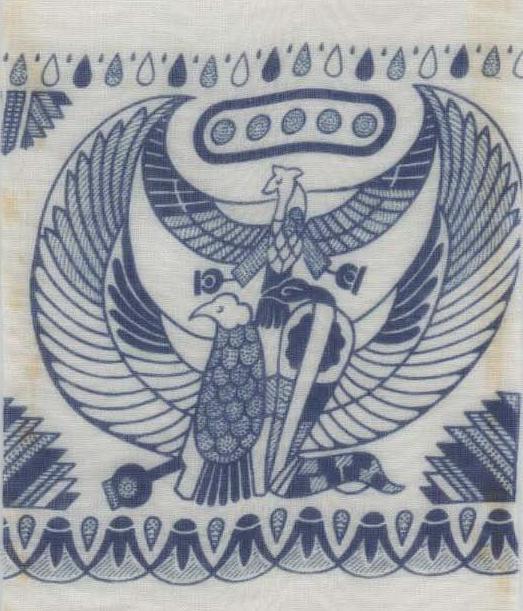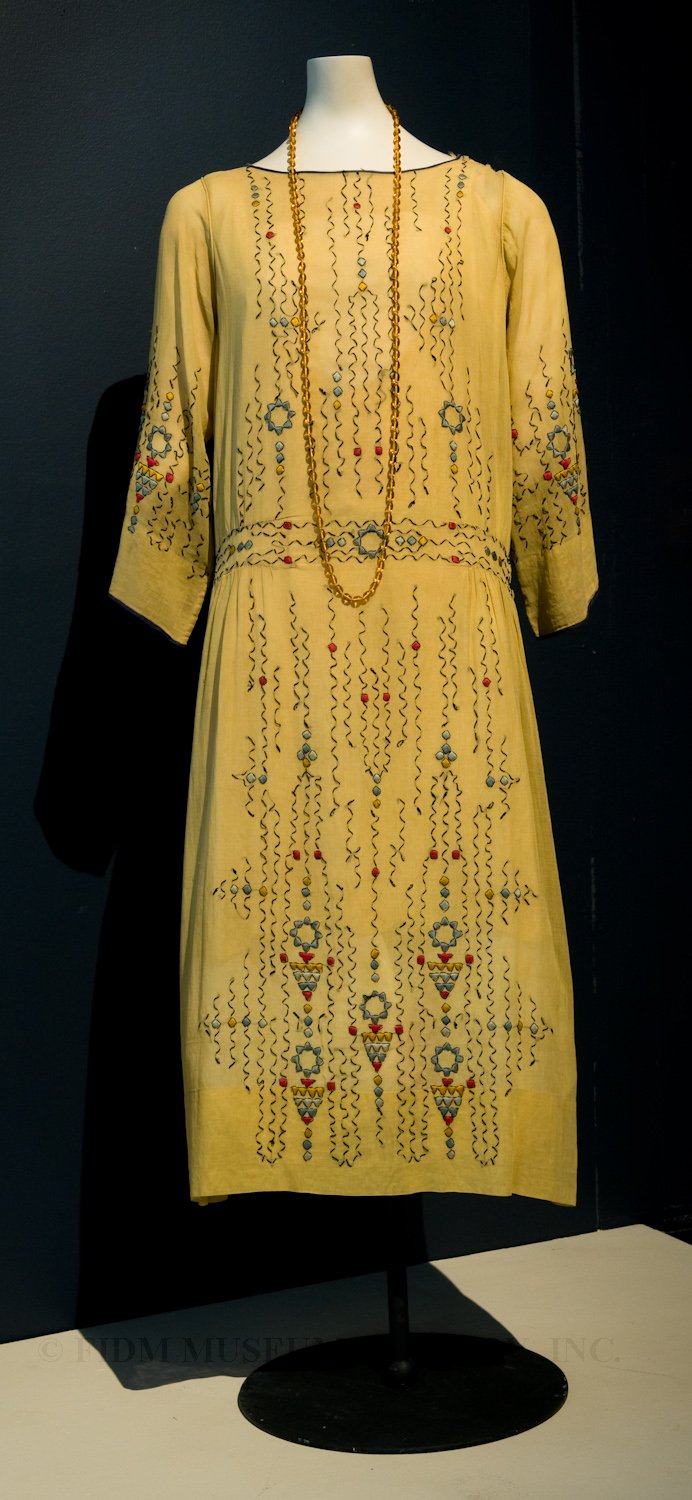In late 1922, the British archaeologist Howard Carter unearthed and opened the sealed tomb of King Tutankhamun in Luxor, Egypt. Though Egyptian art and ornament had served as a source of artistic inspiration for many centuries, the discovery of King Tutankhamun’s tomb created an immediate renewal of interest in Egypt throughout Europe and North America. Reporters present at the opening of the tomb sent frequent articles and images to their home newspapers, resulting in widespread knowledge of the archaeological find. By early 1923, Egypt (or fanciful perceptions of Egypt) had inspired a wave of Egyptian-influenced garments, accessories and decorative embellishments.
Textile
c. 1923
Gift of Robert Fortunoff
99.274.114
The relative simplicity of line seen in Egyptian art was considered extremely modern in 1923. Others admired Egyptian floral designs, and the use of the lotus motif in particular. The blue and white textile swatch above features an abstracted and swagged lotus design along the lower edge. Near the top of the design is a oblong cartouche filled with dark blue dots. In Egyptian hieroglyphs, a cartouche encircled the hieroglyphs used to write the name of a royal personage. The winged creatures seen in the center are a mish-mash of figures representing ancient Egyptian gods and goddesses.
Other demonstrations of Egyptian inspiration were more abstract. When combined, blue and gold were considered an ancient Egyptian color combination, as were red and gold. The “Tut-ankh-Amen hat” was a “bonnet shaped headgear of medium size, between the large picture hat and the skull-fitting toque.”1 The Egyptian craze was so great that a New York Times article sub-heading on February 7, 1923 proclaimed that “business men all over the world plead for designs for gloves, sandals and fabrics” in the Egyptian mode.
c. 1923
Gift of Crystal Smithline
S88.644.2
The “Egyptian” color combination of yellowy-gold ground fabric with touches of blue and red embroidery suggests the aesthetic inspiration of this dress from the FIDM Museum Study Collection. Its abstract and straightforward embroidery motifs resemble a much simplified version of hieroglyphics. This dress was most likely completed at home, by a skilled embroiderer who worked from images seen in newspapers, fashion periodicals or needlework patterns.
1 “Tut-ankh-Amen Hat Appears at Auteuil Races” New York Times 2 April 1923: pg. 1.




Wow, if I’d not read the topic, I might have glanced at this dress and thought it Native American at first! Love the gold color.
I can definitely see what you’re talking about! Though Egyptomania was particularly popular around 1923, there was definitely a generalized interest in non-western cultures during this period. Asia, Middle East, Latin America and Eastern European decorative traditions were all mined for their motifs, colors, etc. Definitely an interesting time for fashion!
For a run-down on Egyptomania in film, check out this post on Worn Through: http://www.wornthrough.com/2010/02/02/cleopatra-egyptian-fashion-in-film/